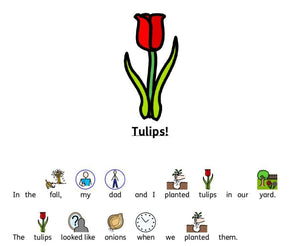uPAR -- New Breakthrough Reading Accommodation Assessment
Back in April 2012 we raved about PAR (Protocol for Accommodations in Reading). This is a system for assessing the effectiveness of a specific reading accommodation for an individual student by noted researchers and educators Denise DeCoste and Linda Bastiani Wilson.
uPAR is the web-based version of PAR, delivering an efficient, easy, research-driven tool for an IEP team to determine the most effective reading accommodation.
Experienced educators and consultants all have stories of running across a student who had the wrong reading accommodation assigned to them -- an e-text reader (eg. Read:Outloud, Kurzweil 3000) or a human reader -- and it wasn't helping. Or, where a student had spent years struggling when they could have benefited from a read aloud accommodation but never had one assigned to them.
Compelling research (Fuchs & Fuchs, 2001; Helwig & Tindal, 2003) suggests that subjective judgement of educators is no better than chance at determining whether a student needs a read aloud accommodation.
PAR compiled texts and assessment tools for an educator to evaluate and predict if an individual will read better with a human reader, an e-text reader or reading independently.
uPAR takes all that great knowledge in PAR that was published in a free PDF. and turns into a readily accessible cloud-based assessment tool. Over 1,500 Canadians who downloaded the PDF version of PAR (and it’s still available for free download here.) know how thoughtful, usable and effective this assessment protocol is. uPAR makes PAR so much easier and efficient:
- Automated protocol requires no staff training
- Group implementation, not limited to one-on-one screenings
- Automated scoring of reading passages
- Centralized data collection
- Reading passages at 1st to 10th grade levels
- Online delivery (iPad, Chromebook, computer, etc.)

Not only does uPAR mean effective assessment of accommodations, it means efficient delivery of accommodations. Fast group implementation can reduce wait times and backlogs, speed-up accommodation implementation and reduce conflict.
Want to learn more on how to use uPAR to get the most effective accommodations for you students?
Get all the details on uPAR here.
contact Bridges for a demo and a webinar.
And remember, you can download the PDF version of PAR to try the assessment with your students, for free, here.
- Bogdan Pospielovsky






Comments 0